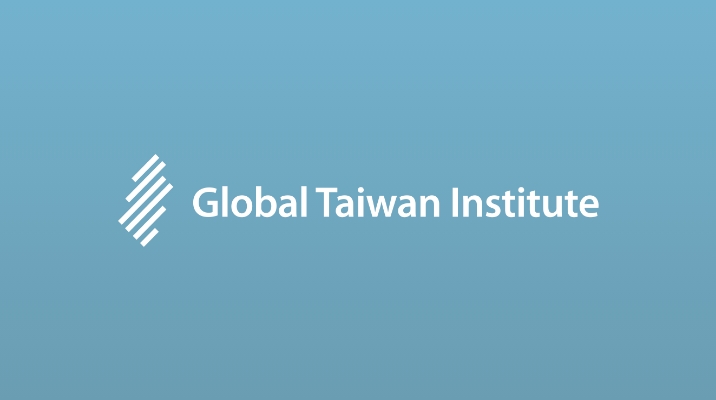Introduction
The debate is over—the United States and People’s Republic of China (PRC) have entered a “new cold war,” as noted by renowned scholars Hal Brands and John Lewis Gaddis in 2021. If the new cold war were to turn hot, Taiwan would be the “most dangerous flashpoint.” In 2012, Xi Jinping (習近平), the newly-appointed general secretary of the Chinese Communist Party (CCP, 中國共產黨), declared his goal to achieve the “Chinese Dream,” which requires “indisputable” Chinese control of Taiwan by 2049 (the 100th anniversary of the CCP’s rule in mainland China). However, the timeline may be even nearer: in 2023, CIA Director William Burns said the United States knew “as a matter of intelligence” that Xi had instructed the People’s Liberation Army (PLA, 中國人民解放軍) to be ready by 2027 for a successful invasion of Taiwan.
China’s range of actions will be largely dictated by the United States and Taiwan itself. CCP policies cite external factors as the primary element shaping the circumstances surrounding Taiwan. In its 2019 white paper, China’s National Defense in the New Era, China condemned the “interference of external forces” working towards Taiwan’s independence. While claiming to adhere to peaceful reunification, the paper stated the CCP will “never allow the secession of any part of its territory by anyone, any organization or any political party by any means at any time;” and that “the PLA will resolutely defeat anyone attempting to separate Taiwan from China and safeguard national unity at all costs.” China doubled-down in 2022, explicitly accusing the United States of contradicting the “One-China Principle” (OCP, 一個中國原則), and reaffirming its readiness to “respond with the use of force.” There is no harder redline in CCP policy than its stance on Taiwan.
War is not inevitable, though. China has a range of actions before it, and US strategy must guide China away from a catastrophic end that could “plunge Taiwan into the abyss,” and potentially drag the United States and China into war. Steering China away from conflict demands a comprehensive approach to the Taiwan situation that balances deterrence, containment, and constructive engagement. By successfully integrating a strategy composed of these three elements, the United States can curb Chinese aggression, foster stability in the Indo-Pacific region, and uphold international norms and principles.
Developing a New Theoretical Framework
External forces may inadvertently cross China’s redline, triggering a conflict. China follows a slow-burning compellence strategy, seeking to coerce Taiwan into the fold. When military theorist and Nobel laureate Thomas Schelling coined the term compellence, he contrasted it with deterrence. Per Schelling’s definition, compellence involves “initiating an action … that can cease, or become harmless, only if the opponent responds.” [1] China has a range of actions it can take, and it will dial up the pressure or turn it down depending on how the United States and Taiwan respond. Schelling cautions, however, that compellence begs the questions not just of “when,” but also “where, what, and how much.” [2] China has answered the “when” (2049), the “where” (Taiwan), and the “what” (the PRC’s “One-China Policy”), but fails to answer the “how much.” At what point an action would trigger a Chinese response is ambiguous.
To prevent an inadvertent misstep, the United States must focus on deterrence and constructive engagement. Deterrence is the opposite side to compellence on the coercion coin, while constructive engagement is best suited when the relationship is “primarily based on differences in ideology.” [3] US and China national interests are at odds, but not diametrically opposed. The CCP’s interest in “rejuvenation”—a vision that includes “solving the Taiwan question”—requires defeating Taiwan’s “de jure independence.” Pursuit of independence, it states, “will plunge Taiwan into the abyss and bring nothing but disaster to the island.” By contrast, US policy calls for “maintaining peace and stability” in Taiwan, and supporting the capacity of both Taiwan and the United States to defend against “force or coercion.” However, US policy has avoided endorsing an independent Taiwan, insisting that the United States “opposes any unilateral changes to the status quo from either side.”
Maintaining the status quo is inherently a deterrent strategy. While directly opposing compellent actions from China, less confrontational policy leaves room for constructive engagement. In essence, the United States must deter China from military and economic hard power coercion, while seeking constructive engagement on diplomatic areas of agreement.
The third prong of US strategy, containment, must guide the other two. Deterrence and constructive engagement threaten punishment for compellent actions and reward cooperation; however, as the 2049 horizon comes closer, the incentives will grow for China to take a harder stance towards achieving its end state. Deterrence will be forced to play an outsized role, pushing all parties closer to the brink—either by escalating the threat of punishment or until the redline is crossed, forcing a catastrophic outcome. Therefore, US strategy must be to keep China’s goal of reunification close enough that China does not feel the urgency to regain control—but far enough away that Taiwan does not actually slip under China’s control. This three-pronged strategy in the long-term will shape Chinese actions in a direction more aligned with the current international order.
Practical Applications
Deterrence remains the cornerstone of US military strategy. While the US Navy has historically exercised dominant presence in the Western Pacific, China’s navy now surpasses the size of not just the Indo-Pacific Fleet, but the entire US Navy. This is particularly concerning for deterrence when numerical advantage is a profound indicator of naval success. In the air domain, technological superiority often wins over mass—but again, China’s modernization of the PLA Air Force has eroded deterrence, achieving parity in air superiority with the United States in 2017. To maintain credible deterrence, the United States must rely on coalition-building— especially in the maritime domain—through exercises like Malabar, and by expanding participation beyond Quad and AUKUS to regional strategic partners like Thailand, Indonesia, and the Philippines. In the skies, the United States should accelerate the deployment of advanced systems like the Next-Generation Air Dominance (NGAD) platform, the B-21 bomber, and the Collaborative Combat Aircraft; as well as refining operational concepts, like Agile Combat Employment (ACE), for the means of reaching and surviving in theater.
Such concepts also benefit from cooperation with allies and partners, by increasing shared basing of assets around the region. For all these weapons and defense systems, coalitions and posturing, deterrence by punishment does not need to be acted upon in order to be credible. Simply knowing NGAD air assets are in the US arsenal and able to reach PLA targets, and knowing that an attack on Taiwan means war with the United States, Japan, and others, all affect China’s calculus for a first strike. A credible military presence in the Indo-Pacific signals US resolve while maintaining the status quo, avoiding direct provocation.
The military effort should not dominate America’s foreign policy, however; and if an escalation to violent force occurs, constructive engagement has already failed. Neither wants a war, and both agree on the need to compete responsibly. In the 2023 Biden-Xi summit in San Francisco, the two leaders converged on issues of fentanyl distribution, the risks of artificial intelligence, and the need for military-to-military communication. Moreover, Washington believes shared challenges like climate change, biodefense, and food insecurity are areas of cooperation with Beijing. Focusing on these common interests can “sow the seeds of political change” to overcome ideological differences.
The United States must maneuver diplomatically to contain both China’s narratives and its coercive pressure. Containment aims to prevent a state from seeking to “extend its borders and spheres of influence” or to “change the existing international order” in a way “contemptuous of international norms.” All diplomatic maneuvers require bilateral or multilateral action, and the actions here are no exception. Many states benefit from the status quo. Japan, South Korea, and especially Taiwan have vested interests in “combining to check the ambitions of another state.” China, Russia, and North Korea “share a deep hostility” towards Japan, with Taiwan acting as a buffer. Tokyo recently qualified the Taiwan Strait as “a matter of life and death” for Japan. Similarly, South Korea’s ever-present interest in regional security now far outweighs its economic interest in China. When realizing that its manufacturing value chain is tied predominately to Taiwan, the peninsula state has far less stake in China’s economy than previously assumed. Instead, South Korea’s primary interests are maintaining the international order and rule of law. These risks to US allies converge with interests in Taiwan, and make a multinational defense treaty in the region possible. Other security dialogues like the Quad, which bring in India and Australia, tip political, military, and economic advantages firmly into the status quo camp.
Conclusion
The devastation of a great power war between the United States and China could be greater than any the world has ever seen, and the Taiwan Strait is increasingly the most dangerous tinderbox for this potential conflict. In light of Xi’s 2049 benchmark, China’s patience with the Taiwan status quo may be running out. A three-pronged strategy of deterrence, constructive engagement, and containment provides a comprehensive framework for addressing the Taiwan challenge. While deterrence prevents immediate aggression, constructive engagement fosters long-term cooperation, and containment shapes China’s behavior to align more closely with international norms. In the words of Gaddis, “opposites held in mind simultaneously, thus, are ‘the strategist’s keys to victory.’” [4]
The main point: As China’s self-imposed deadline for achieving the “Chinese Dream”—which requires “indisputable” Chinese control of Taiwan—approaches, the United States needs to pursue a three-pronged strategy of deterrence, constructive engagement, and containment. Integrating these three opposing prongs into a cohesive strategy can avoid conflict through 2049, allowing a new normal to be reached—one without redlines and the opportunity to widen détente in the US-China relationship.
[1] Thomas Schelling, Arms and Influence (New Haven: Yale University Press, 1966), 72.
[2] Ibid.
[3] Ibid, 80.
[4] John Lewis Gaddis, On Grand Strategy (New York, NY: Penguin Books, 2018), 83.




